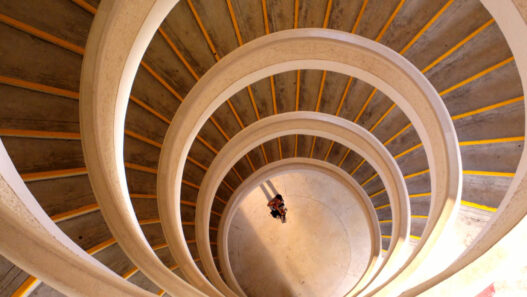Class 2: Preparing for Every Meditation
Hi, welcome back to the Wheel of Life retreat, online retreat, kind of cool right? And I’m very pleased to have Zhou Xiaoping, Alison, helping me to translate. Thank you for coming and again thank you and Stanley for helping me for so many years. I’m very grateful. This is going to be online session number two, and today we’re going to do a meditation together.
[su_icon icon=”icon: link” color=”#ff1259″ size=”20″ shape_size=”12″ url=”https://www.youtube.com/watch?v=JWTJVbgjQQg&t=5s” target=”blank”]Jump to this place in the video[/su_icon]There’s a special way to prepare for a meditation. In Tibetan, it’s called yenlak dunpa (YAN LAG BDUN PA), and these are seven different steps to prepare properly for a meditation. And I know a lot of you have heard them before; and of course I’ve been teaching them for ten years during these lam rim (LAM RIM) teachings, but my hope is that … and by the way I’d like thank the ACI Executive Director, Tim Lowenhaupt, and I’m very grateful that he’s really organized this online retreat among all the other things he does. And I was kind of excited to do the retreat because I think many more people will be able to enjoy that they don’t have to travel somewhere and spend a lot of money; so I feel like a lot of people who haven’t been able to come to the lam rim retreats in the last ten years will be able to attend this one.
[su_icon icon=”icon: link” color=”#ff1259″ size=”20″ shape_size=”12″ url=”https://www.youtube.com/watch?v=JWTJVbgjQQg&t=49s” target=”blank”]Jump to this place in the video[/su_icon]So, I think it’s good for all of us if we can just review these preliminaries to a meditation. And so I apologize if you heard these seven steps before, but I think they’re extremely important and I myself do them almost every day. I like to say that you can’t run a race in the Olympics if you don’t warm up first. And I think it’s easier to warm up your body than it is to warm up your mind. When I was young and I was first learning to drive a car—which Allison promised to learn this year—I remember the first thing the teacher told us: when you get in your car, start the car, and then wait for three, four, or five minutes.
Don’t drive it right away, because a car needs time to warm up. And he said your car will last twice as long if you warm up. And the last used car I had when I lived here, it was almost 30 years old and it lasted fine for 30 years. In fact, it’s still running; I gave it to my friend. So, that’s a big piece of knowledge for anyone: warm up your car. Just for five minutes. There’s a there’s a hot and cold needle [guage] in your car. It goes like this. So wait until the needle goes off of cold.
[su_icon icon=”icon: link” color=”#ff1259″ size=”20″ shape_size=”12″ url=”https://www.youtube.com/watch?v=JWTJVbgjQQg&t=2m34s” target=”blank”]Jump to this place in the video[/su_icon]And meditation is the same. So, I’ve been meditating for, I don’t know, over 40 years and I still cannot start a meditation cold. Even after over 40 years of meditating I need to warm up my meditation mind before I start meditating. And that warm-up has become a very enjoyable and precious part of my life. So actually in the morning, I look forward to having coffee and meditation warm-up. So, we’re going to do the warm up together, and then I’m going to teach you other kinds of meditations, sort of warm-ups. And in my opinion, all of your meditations, every day you could choose one of these three warm-ups to put in your meditation.
[su_icon icon=”icon: link” color=”#ff1259″ size=”20″ shape_size=”12″ url=”https://www.youtube.com/watch?v=JWTJVbgjQQg&t=5m24s” target=”blank”]Jump to this place in the video[/su_icon]The first warm-up, which is called the seven-part warm-up, its focus is one of the teachers in your life. And the theory behind that warm-up is called sak jang (BSAGS SBYANG). So sak (BSAGS) means: just before you do your main meditation, try to collect some real quick good karma. And jang (SBYANG) means: just before you start your main meditation try to clean some bad seeds out of your mind.
And right now it’s spring in Arizona where I’m talking, this is the actual week that we are planting most of our garden. First we do the jang, we get rid of all the old dirty leaves and old problems in the soil. We clean the soil. When you’re preparing for a meditation, it’s very very sweet to clean any bad seeds you made in the last 24 hours.
So, don’t try to think of all the bad seeds you did in your life, you will never start your meditation. It’s very powerful and it’s enough to just think about the main bad seeds you might have planted in the last 24 hours.
[su_icon icon=”icon: link” color=”#ff1259″ size=”20″ shape_size=”12″ url=”https://www.youtube.com/watch?v=JWTJVbgjQQg&t=6m56s” target=”blank”]Jump to this place in the video[/su_icon]Then you do the sak part. Sak means “make some instant good karma.” So, jang—SBYANG is like cleaning out the soil; making it clean for the new plant. And then sak is kind of like, “put fertilizer and some water on the plant”, and the plant is your meditation.
Now, the easiest way to clean away your bad seeds; the easiest way to plant some new good seeds, is to invite one of the teachers in your life to meditate with you. So, these seven steps for preparing for meditation, they’re all based on one of your teachers. Later in this series of 25 videos, I’ll teach you a special way to prepare for your meditation which is more based on shamatha; and shamatha means, “making your mind very very peaceful so you can see emptiness.” So, sometimes we’ll do this seven steps focused on one of our teachers, but sometimes the preparation for a meditation this month will be a traditional preparation for shamatha meditation, which is making the mind quiet enough to see emptiness.
And then we’ll have a third kind of meditation warm-up, and that will be based on emptiness itself. So, three kinds of warm-up, and today we’re going to do the seven-step warm-up together. And it’s based on our teacher. We’ll be choosing one of the teachers in our life.
[su_icon icon=”icon: link” color=”#ff1259″ size=”20″ shape_size=”12″ url=”https://www.youtube.com/watch?v=JWTJVbgjQQg&t=9m26s” target=”blank”]Jump to this place in the video[/su_icon]Of course the most powerful example would be your heart teacher, if you have a heart teacher. The short definition of a heart teacher is: “the teacher who helped you the most in this life”. So, that would be the most common example of a teacher to use for this meditation, but you could use other teachers in your life. Your dad and your mom were your first great teachers. And then obviously in your school life, everyone met a few special teachers in their life. Sometimes it’s not a school teacher, sometimes it’s a sport teacher, or an art teacher, or a music teacher.
Later on you met someone who taught you how to do your occupation, your job. That’s a special teacher in our life. If you’re married, then your wife or husband is a great teacher in your life. If you have children, those are great teachers. Even in your middle age, your parents who are elderly are nice teachers to have in your life.
[su_icon icon=”icon: link” color=”#ff1259″ size=”20″ shape_size=”12″ url=”https://www.youtube.com/watch?v=JWTJVbgjQQg&t=12m22s” target=”blank”]Jump to this place in the video[/su_icon]If you don’t have a heart teacher, you can also just imagine one, and you could bring that teacher to prepare for these seven steps of meditation. And of course you could take your historical teachers. It could be Buddha, Jesus, Moses, Confucius, Lao Tzu—many, many choices. Now, just in the last few weeks my personal favorite has been Arya Nagarjuna. So, I’ve been doing the seven steps with him. And then every three weeks or so, you can change the teacher, or every day if you want.
[su_icon icon=”icon: link” color=”#ff1259″ size=”20″ shape_size=”12″ url=”https://www.youtube.com/watch?v=JWTJVbgjQQg&t=14m21s” target=”blank”]Jump to this place in the video[/su_icon]So, the picture we used to introduce this segment shows a monk walking down a country road, and I’ve visited many times the place where Nagarjuna is supposed to have been born and studied. In Tibetan, it’s called bet tey yul (BEE DA’I YUL), kind of like “the land of the coconuts.” So, I always imagined when I when I think of Nagarjuna … I don’t like to close my eyes and think of a painting or a statue; I like to think of Nagarjuna walking down the road to his house. He’s just like a real person. Somehow I imagine he’s a very kind of funny person, and extremely intelligent, and extremely moral, and a great understanding of emptiness. That’s why sometimes he’s called “The Arya.”
So, let’s start our seven steps. If you don’t know how to prepare your meditation space, or the correct posture; I taught it in the first two years of the ten years, and I suggest you go check it on The Knowledge Base. I’ll ask Tim to put the link up for you at the end of this video.
[su_icon icon=”icon: link” color=”#ff1259″ size=”20″ shape_size=”12″ url=”https://www.youtube.com/watch?v=JWTJVbgjQQg&t=15m27s” target=”blank”]Jump to this place in the video[/su_icon]Okay, so let’s get ready to meditate. The main thing is to be comfortable. The most comfortable place in my house is my couch, and I meditate on the couch and it’s just very comfortable to me. So, sit somewhere where you don’t have to move, and sit up straight. It’s always good to put some cushions to raise the back of your pigu (屁股), bottom. Your hands are comfortable on your legs. Any way that’s comfortable for you. Sometimes I will put a small cushion in my lap, and I like to rest my hands there. Most important is that your back is straight. Small smile on your face. Don’t crunch up your face, don’t wrinkle, don’t frown. Okay, here we go.
[su_icon icon=”icon: link” color=”#ff1259″ size=”20″ shape_size=”12″ url=”https://www.youtube.com/watch?v=JWTJVbgjQQg&t=17m56s” target=”blank”]Jump to this place in the video[/su_icon]The mouth should not be too tight. The lip should be relaxed. The forehead should be relaxed. The eyelids should be relaxed. The hands should be relaxed. The back is straight. The shoulder blades are pushed together and your chest comes out a little bit, which means that your hands might come back more on your thighs than on your knees. It’s very good for your posture if your lower abdomen is firm, but not pulled in with effort.
So, how to get that firm abdomen which gives you a strong back? There’s a nice trick. When you breathe out, and you finish your out-breath, then consciously try to push out a little more air from your lungs and that will tighten your lower abdomen. And that will make it easier to sit up straight.
[su_icon icon=”icon: link” color=”#ff1259″ size=”20″ shape_size=”12″ url=”https://www.youtube.com/watch?v=JWTJVbgjQQg&t=19m39s” target=”blank”]Jump to this place in the video[/su_icon]So, let’s start with ten breaths before we start the first of the seven steps.
Very slow exhale. At the end of the exhale press a little more breath out.
Don’t worry about the in-breath, it will take care of itself. Make sure your lower abdomen is tightening slightly at the end of the out-breath. Pushing out the last bit of air from your lungs. It will also prevent a buildup of prana, or lung (RLUNG), or chi; and then you won’t get feelings of nervousness as you meditate. Small smile. Eyelids are soft.
Let’s do ten long exhales.
[su_icon icon=”icon: link” color=”#ff1259″ size=”20″ shape_size=”12″ url=”https://www.youtube.com/watch?v=JWTJVbgjQQg&t=21m48s” target=”blank”]Jump to this place in the video[/su_icon]Now we’ll start the first of the seven warm-up steps.
Invite one of those teachers to come to sit with you. Could be any of those teachers we talked about. Very powerful person to sak jang with them. Very powerful for planting good seeds, very powerful for cleaning bad seeds.
And you invite them and they come and sit in front of you on the same level. I like to say knee to knee, and to understand they are not a statue or a painting. It’s a real person in front of me. I can see their chest moving with their breath. I can feel the subtle warmth from their body knee to knee. Good people have a certain delicate fragrance to them. Like a very subtle jasmine smell.
So, get this teacher’s image in front of you. It’s not a painting; it’s a real person. Your eyes are closed, but their eyes are open. They are looking at you as you meditate, and they’re very pleased with you that you are meditating. Just enjoy being with them. We’re going to meditate together.
[su_icon icon=”icon: link” color=”#ff1259″ size=”20″ shape_size=”12″ url=”https://www.youtube.com/watch?v=JWTJVbgjQQg&t=24m23s” target=”blank”]Jump to this place in the video[/su_icon]The second of the seven warm-up steps is to make an offering to your teacher.
And it just sets the feeling of the meditation as very happy. So, imagine any beautiful gift. I think Nagarjuna liked coconut. There’s a traditional offering to imagine the whole sky covered with flowers, and make this offering.
There’s a very special offering to your teacher and that is to bow down to that teacher by thinking about some beautiful quality that they have. So, I’m thinking of Arya Nagarjuna. Good humor, funny person, extremely brilliant, and knows how to write beautiful, beautiful short things. So I’ll just appreciate Nagarjuna. And that’s a high offering. You appreciate your own teacher.
[su_icon icon=”icon: link” color=”#ff1259″ size=”20″ shape_size=”12″ url=”https://www.youtube.com/watch?v=JWTJVbgjQQg&t=27m58s” target=”blank”]Jump to this place in the video[/su_icon]The third of the seven preparation steps is to clean away the bad seeds you’ve made in the last 24 hours.
So, spend a few minutes to open your heart. Let your teacher look inside, and show them the mistakes you have made in the last 24 hours.
Don’t be shy. Be completely honest. And that kind of willingness to show your teacher your mistakes, and to promise them you’ll try harder today, this kills those old bad seeds. And that will make your meditation much sweeter.
Personally I like to spend ten breaths on each of the seven steps. Sometimes twenty if my mind is kind of busy.
[su_icon icon=”icon: link” color=”#ff1259″ size=”20″ shape_size=”12″ url=”https://www.youtube.com/watch?v=JWTJVbgjQQg&t=30m22s” target=”blank”]Jump to this place in the video[/su_icon]Okay, now preparation step number four.
We’re going to balance thinking about the bad seeds by thinking about some good things we did. It’s very much human nature to focus on our mistakes, and we don’t give equal time to the good things we did.
So, now ten relaxed breaths thinking about the sweetest things you did, mostly for other people, in the last 24 hours.
You can include your meditation time as something you’re happy about.
Okay, here we go. Ten breaths. What are some of the sweet things you did in the last 24 hours for other people?
[su_icon icon=”icon: link” color=”#ff1259″ size=”20″ shape_size=”12″ url=”https://www.youtube.com/watch?v=JWTJVbgjQQg&t=32m44s” target=”blank”]Jump to this place in the video[/su_icon]And now we’re ready for the fifth of the seven preparation steps.
And in our mind we ask our teacher to continue teaching us. Remember that the teachers teaching can come to us in many ways. Oh sure, sometimes we get a video talking about the steps to the path. Maybe we read a scripture. Maybe we go to listen to a teacher in person. But negative things also teach us a lot. The challenges and disappointments in our life, they often teach us more than the successes.
So, here in this fifth step it can be a kind of surrender. “Oh, teacher please teach me, let good teachings come to me and let difficult teachings come to me, and I will have courage.” “I will be strong, and I will also learn from the difficult parts of my life; so I trust you.” “Send me sweet dharma teachings, but please also send me difficult teachings—problems in my life, like very challenging viruses, and I will do my best to become a better person from these challenges.”
Then when difficult situations come to you, please remember you asked your teacher to send them. And don’t get discouraged and don’t get off balance; use them to become stronger. When difficult times come to you, use it as a reason to serve more people.
[su_icon icon=”icon: link” color=”#ff1259″ size=”20″ shape_size=”12″ url=”https://www.youtube.com/watch?v=JWTJVbgjQQg&t=35m13s” target=”blank”]Jump to this place in the video[/su_icon]This virus is an excellent time for Buddhists. This is a great opportunity to show other people what is a Buddhist. The more dangerous life is, the more financial trouble we have, the more doubts and fears that people have—a real Buddhist person steps up. This is their time to show how much they can help people.
If a Buddhist person has a face mask and another person does not have a face mask, the Buddhist person happily gives the face mask to the other person. And we’re happy we had the chance to do it.
[su_icon icon=”icon: link” color=”#ff1259″ size=”20″ shape_size=”12″ url=”https://www.youtube.com/watch?v=JWTJVbgjQQg&t=38m48s” target=”blank”]Jump to this place in the video[/su_icon]The sixth preparation step is to ask this teacher to stay in our life. Ask them not to leave our life. The karma, the good seeds to have a teacher, are perhaps the most rare seeds in the world, and may I always plant those seeds to have you in my life. Please stay in my life.
[su_icon icon=”icon: link” color=”#ff1259″ size=”20″ shape_size=”12″ url=”https://www.youtube.com/watch?v=JWTJVbgjQQg&t=41m05s” target=”blank”]Jump to this place in the video[/su_icon]The seventh step in the meditation, the last one, it comes after the actual meditation.
So, you do these six steps that we just did, then you do your actual meditation, which might be one of the steps of the path. Like a death meditation, or an emptiness meditation, or a tong len (GTONG LEN)—”giving and taking” meditation, or exchanging myself and others.
And then after you finish the meditation, you think about all the good seeds you planted by doing the meditation, and then you very consciously put them in the bank. When you dedicate any good seed to another person’s happiness, then that seed is protected and it will always stay with you. So, paradoxically you keep the seed by giving it away.
So, the seventh step of meditation. After your main meditation is completed, then imagine that you are sharing the good seeds you planted by meditating. And you are sending them out to all the people in this world. Start with people who are in the same room. Then share those good
seeds with other people in your neighborhood. Then send the seeds to all the people in your city, and share them with everyone in your country.
Then share them with everyone in this planet, and then send them out to outer space—to share with all the people living in other worlds. There’s a tradition to do this sharing of the good seeds of our meditation, by imagining those seeds as a golden light.
[su_icon icon=”icon: link” color=”#ff1259″ size=”20″ shape_size=”12″ url=”https://www.youtube.com/watch?v=JWTJVbgjQQg&t=42m44s” target=”blank”]Jump to this place in the video[/su_icon]And at the end of our meditation we will take at least three very, very slow deep exhales, and we will send those good seeds out. Share them with other people as a beautiful golden light.
Okay, let’s do it together.
[su_icon icon=”icon: link” color=”#ff1259″ size=”20″ shape_size=”12″ url=”https://www.youtube.com/watch?v=JWTJVbgjQQg&t=46m0s” target=”blank”]Jump to this place in the video[/su_icon]One last suggestion about your meditation, and then we’re finished with this segment and this month’s practice. So, I’ve been meditating for over 40 years, but there have been periods in my life when I became busy. Maybe I was too busy teaching meditation and I didn’t have time to do my own meditation. And I just want to tell you that this will happen to every meditator, and then don’t get very disturbed. When you’re ready, start your meditations again.
And what I’ve learned after many years of meditating, start with the very short meditations. 15 minutes, 20 minutes; start back or begin meditation with short ones. Then once a week increase those meditations by just one minute. So, this week 15 minutes. Every day.
Same time is helpful, then on Sunday increase to 16 minutes. And the next Sunday increase to 17 minutes. And in this way, within half a year, you will have a very good 40-50 minutes of meditation. And within a year, you’ll have a very good 1 hour of meditation. And that’s our goal; to have one hour of meditation per day. To build up to one hour, which is perfect for seeing emptiness.
Slowly open your eyes. Take a good stretch.
Thank you Alison for translating, and see you guys in segment 3.
[su_icon icon=”icon: link” color=”#ff1259″ size=”20″ shape_size=”12″ url=”https://www.youtube.com/watch?v=JWTJVbgjQQg&t=47m15s” target=”blank”]Jump to this place in the video[/su_icon]









